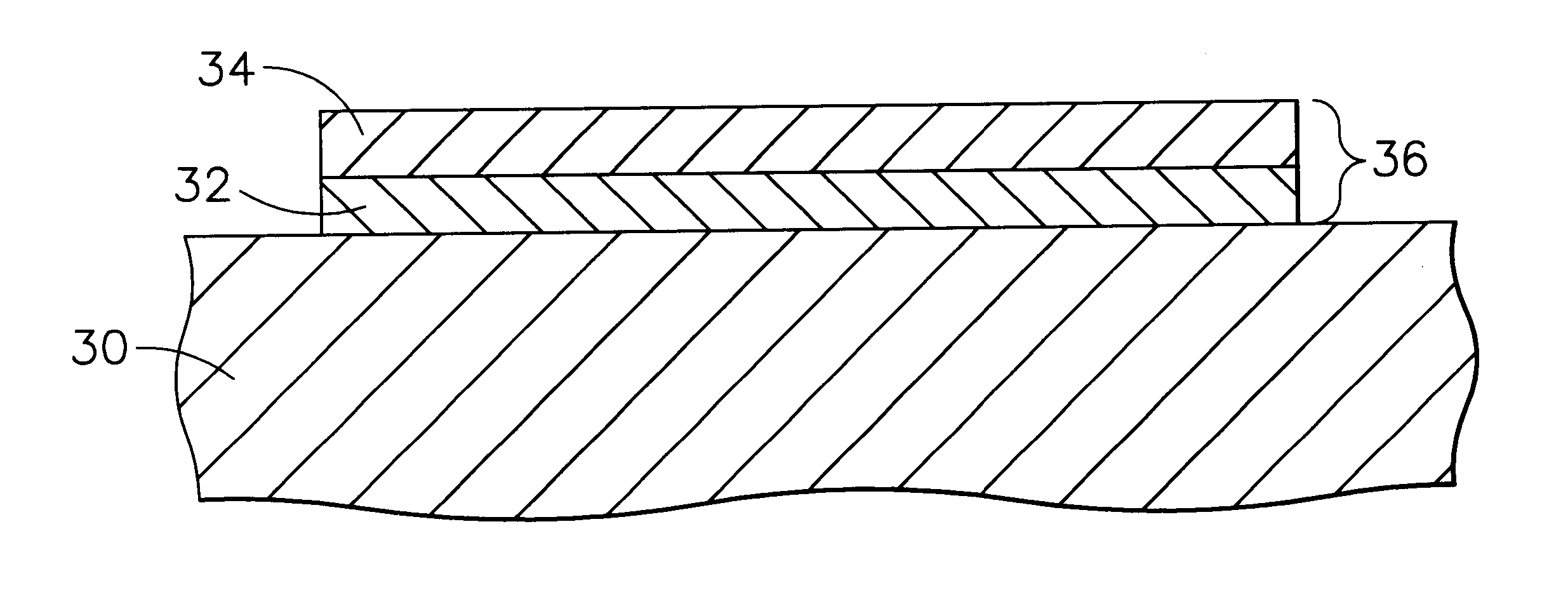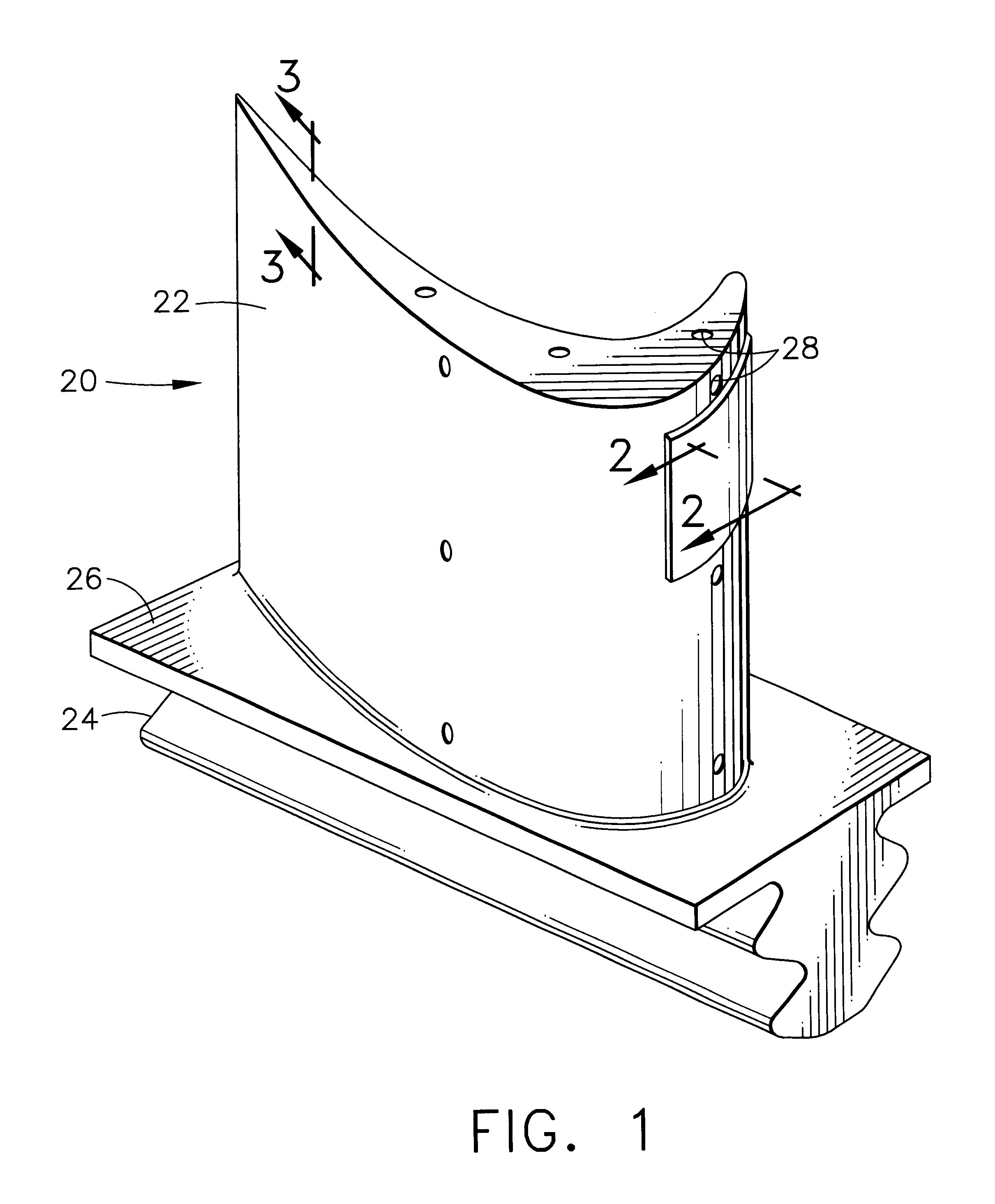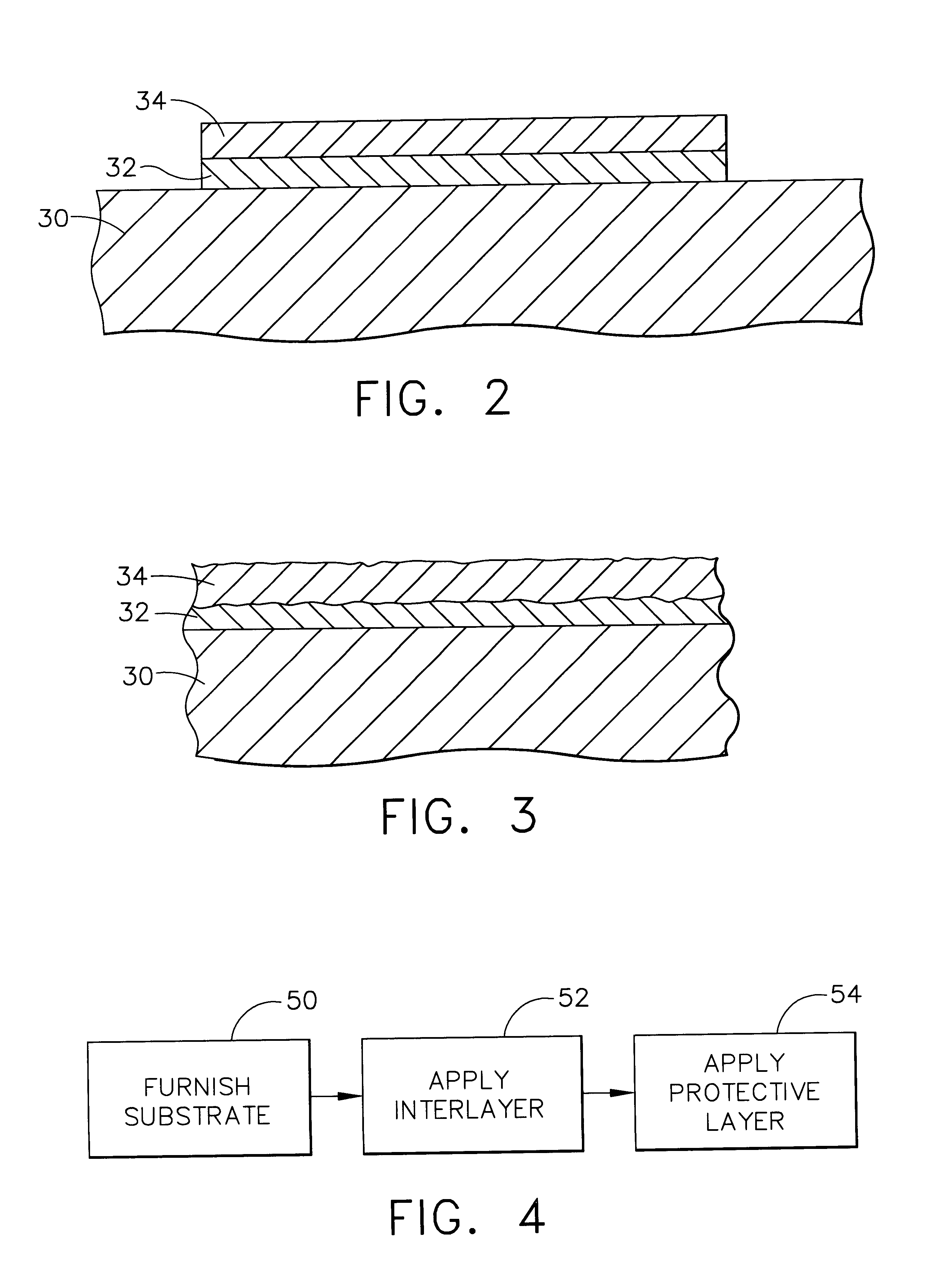Article with intermediate layer and protective layer, and its fabrication
a protective layer and intermediate layer technology, applied in the direction of blade accessories, waterborne vessels, machines/engines, etc., can solve the problems of ceramic thermal barrier coatings subject to failure, limited maximum temperature of environmental coatings, etc., and achieve excellent resistance to oxidation and reduce the tendency of protective layers
- Summary
- Abstract
- Description
- Claims
- Application Information
AI Technical Summary
Benefits of technology
Problems solved by technology
Method used
Image
Examples
Embodiment Construction
FIG. 1 depicts a component article of a gas turbine engine such as a turbine blade or turbine vane, and in this illustration a turbine blade 20. The turbine blade 20 is formed of any operable material, but is preferably a nickel-base superalloy. The turbine blade 20 includes an airfoil section 22 against which the flow of hot exhaust gas is directed. (The turbine vane has a similar appearance in respect to the pertinent airfoil section, but typically includes other end structure to support the airfoil.) The turbine blade 20 is mounted to a turbine disk (not shown) by a dovetail 24 which extends downwardly from the airfoil 22 and engages a slot on the turbine disk. A platform 26 extends longitudinally outwardly from the area where the airfoil 22 is joined to the dovetail 24. A number of internal passages extend through the interior of the airfoil 22, ending in openings 28 in the surface of the airfoil 22. During service, a flow of cooling air is directed through the internal passages...
PUM
| Property | Measurement | Unit |
|---|---|---|
| temperatures | aaaaa | aaaaa |
| temperatures | aaaaa | aaaaa |
| temperatures | aaaaa | aaaaa |
Abstract
Description
Claims
Application Information
 Login to View More
Login to View More - R&D
- Intellectual Property
- Life Sciences
- Materials
- Tech Scout
- Unparalleled Data Quality
- Higher Quality Content
- 60% Fewer Hallucinations
Browse by: Latest US Patents, China's latest patents, Technical Efficacy Thesaurus, Application Domain, Technology Topic, Popular Technical Reports.
© 2025 PatSnap. All rights reserved.Legal|Privacy policy|Modern Slavery Act Transparency Statement|Sitemap|About US| Contact US: help@patsnap.com



